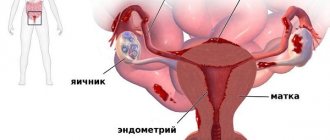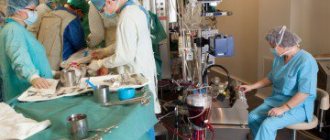Disability
Immediately after a heart attack, a person is given a sick leave certificate for at least 4 months. If the patient has not recovered during this time, you can apply for assignment of a disability group.
According to medical statistics, about half of all those who have suffered a heart attack fully recover and return to their previous jobs after 4 months of sick leave. But this is possible taking into account some restrictions in the usual way of life.
List of required documents
To apply for disability, you will need to prepare a whole list of documents.
Form 0-88/U can be obtained at the clinic at the place of attachment.
First of all, the patient must visit the attending physician, who will conduct an examination and prescribe the necessary tests for a medical and social examination.
A person applying for a group must write an application addressed to the head of a specialized bureau. The application must include a request to carry out an examination in order to identify the need for the “disabled” status and carry out individual rehabilitation measures.
After the application is received and sent to the ITU to the experts responsible for conducting the medical and social examination, the date and time for the start of the examination is set. The duration of the event is 30 days.
It is necessary to prepare a package of documents:
Disability in Parkinson's disease
- passport or other document confirming the patient’s identity (original documents, photocopy);
- a photocopy of the work record book, which must first be certified by the HR department;
- for pensioners - a pension certificate;
- SNILS;
- educational documentation;
- documents with comprehensive information about the state of human health, the presence of dysfunctions and disorders in the functioning of the body, medical history;
- discharge after a heart attack and stenting (original version and photocopy);
- necessary rehabilitation program.
Groups
To determine the group, they rely on the general condition of the patient and the likelihood of his further recovery.
First
Given to patients who have suffered an acute or major infarction with complete disability. The treatment did not produce results, and repeated attacks are not excluded. Such patients require constant care, cannot move independently, take care of themselves, and are unable to control their behavior.
Second
Assigned to people with partial loss of ability to work, provided that a transition to a more relaxed job with minimal stress is possible. When examined in such patients after rehabilitation, there are no visible disturbances in the functioning of the heart.
Third
Patients in this group after a heart attack can work at their previous place of work with minor restrictions on workload, as well as a ban on night shifts.
What disability group is given?
Depending on the condition of the body, a person is assigned disability group 1, 2 or 3, indicating the degree of legal capacity. Their receipt is determined by indications, which include the overall impact of myocardial infarction on health and prognosis for improvement.
After a severe form of coronary heart disease and competent measures taken to eliminate it (complex therapy, bypass surgery, stenting), the patient can recover. In this case, a sick leave certificate is issued for up to 4 months during rehabilitation.
In case of identified problems (risk of sudden death, chronic heart failure), the question arises of determining his incapacity. Myocardial infarction, as well as methods for eliminating it, are in fact not an indication for recognizing a person as disabled.
The disability group after a heart attack and stenting is determined according to the following criteria:
- the patient's physical condition;
- complexity of the disease;
- the degree of complications and consequences of the disease;
- the patient's ability to self-care;
- the need for social protection, rehabilitation and habilitation;
- patient's working conditions, professional activity.
Medical and social examinations are carried out by specialists of various profiles. In addition to the cardiologist, phlebologists, endocrinologists, therapists and neurologists are involved. The patient undergoes the necessary tests and undergoes a full examination.
If the patient has minor deviations in the functioning of the heart and other internal systems, he cannot, according to indications, perform work related to physical activity. The third group is assigned. In this case, disability is removed after achieving a stable positive result of further treatment.
The second group is characterized by the patient’s inability to perform heavy physical work after suffering from a moderate illness. The second group is given to people who have undergone heart surgery, including stenting. The patient needs a change in work activity if it was previously associated with heavy loads.
The first group is considered non-working, it is issued for 2 years, after which a re-examination is carried out. If the results are negative, permanent incapacity is recognized. Patients after myocardial infarction suffer from complications of the pathology. People cannot care for themselves; they need care from third parties.
The third and second groups are given for a year. After this, a repeat MSE is carried out, and based on the results, the group is removed or extended. In difficult situations, if complications have developed, the person is transferred to another group.
Persons who have reached retirement age, according to the legislation of the Russian Federation, are recognized as disabled people of groups 1, 2, 3 indefinitely.
Disability after stenting
The operation of stenting the coronary vessels itself is not the basis for obtaining a group, since it is a minimally invasive method and is usually well tolerated by patients. The indication for registration of disability is a heart attack, for the treatment of which the operation was performed.
However, if after stenting at increased loads angina attacks remain, and the patient’s condition has not improved, then the commission can assign the appropriate group.
How is a group identified?
Following the submission of documentation for assignment of the “disabled” status, activities begin to identify the disability group.
Minor disturbances in the functioning of the heart and vascular system require the assignment of disability group 3. A person begins to engage in professional activities again, provided that before the disease he participated in simple physical or mental work.
If, after surgical intervention for myocardial infarction, complications arise that lead to a decrease in the function of the heart or blood vessels, or angina pectoris, then group 2 is assigned. In this case, disability implies the introduction of restrictions on professional activities. A person should engage in light work and systematically undergo rehabilitation measures.
A person who, as a result of a heart attack, exhibits signs of congestive heart failure, even after therapeutic measures and rehabilitation, has a disability.
A sick person regularly experiences attacks of angina pectoris and chest pain. In this situation, group 1 is assigned
If therapeutic and restorative measures do not improve a person’s health, if he is no longer capable of work and self-care in everyday life, then disability is assigned indefinitely.
Registration procedure
The main referral for a medical examination is given by the attending physician. Before this, he analyzes the patient’s health status at the end of rehabilitation. The social security service can also refer a person to the commission.
After this, you need to collect the entire package of documents, taking into account the results of the examinations completed during treatment. Next, the candidate for assignment of the status of a disabled person must write an application to the bureau of medical and sanitary examination. In this case, a date will be set for the meeting, and a decision will be made based on its results.
Documentation
The following originals and copies of documents must be attached to the application to the ITU Bureau:
- passport or any other document that can confirm the patient’s identity;
- referral from the attending physician;
- employment history;
- pension insurance certificate (SNILS);
- a certificate issued by the administration of the enterprise about the patient’s job responsibilities and working conditions;
- pensioner's ID;
- outpatient card and certificates that confirm the diagnosis.
Reconfirmation
Myocardial infarction is not included in the list of diseases for which lifelong disability is given, therefore the status of a disabled person is assigned temporarily. Group 1 will have to undergo a second commission every two years, and Groups 2 and 3 - every year.
The package of documents for re-confirmation is the same as for the first application. Additionally, you need to attach certificates with notes on all courses of therapy during rehabilitation, a certificate from work about the working hours, as well as a certificate of already registered disability. Without this, the group's application for confirmation may be rejected.
Nuances of registering disability
For the rehabilitation period, the patient is issued a sick leave certificate, which is valid for at least 4 months. A person whose health was restored during this period will definitely not be able to receive a group.
Whether a person is entitled to a disability and what group it is – these issues are dealt with by a special medical commission.
The document that confirms the status of a disabled person has a limited validity period of 1 year. Upon expiration of the period, re-registration of documentation is required.
Statistics show that 1 out of 2 people who have survived a myocardial infarction and stenting restore body functions and begin professional activities again. In such a course of events, disability is not given.
If complications develop, the person is considered disabled. Possible aggravating factors:
- coma;
- diagnosed posterior wall infarction;
- absolute blockade of the left bundle branch.
When registering a group, the following are taken into account:
- Type of work activity.
- A person’s ability to provide quality services within the scope of professional activity.
- Education data.
- Degree of capacity. A person's ability to take care of himself in everyday life.
- Can the body work stably after an attack?
Taking into account the listed criteria, a special sick leave form is filled out, and the results of the medical examination are recorded in it. Immediately after the required documentation has been collected, they must be submitted to ITU for analysis.
Refusal to receive disability
Members of the commission may refuse to register a disability if the results of diagnosing the patient’s condition are positive. Main reasons for refusal:
- The patient has fully recovered after the treatment, can perform his duties in his previous position, and the profession does not require physical and emotional stress.
- A person is capable of taking care of himself.
- General health allows you to exclude new attacks.
The refusal can be appealed in order to hold an additional commission. To do this, you must submit another application to the ITU Bureau to schedule the next examination. Usually a re-hearing is scheduled within a month from the date of filing the application.
Performance after heart attack and stenting
Patients who have suffered a heart attack are on sick leave due to temporary disability. Sick leave lasts 4 months. This period is allotted for the restoration of the body and a gradual return to normal life. In 40% of cases, a person’s previous state cannot be returned. Physical labor is contraindicated, since this kind of stress can worsen health, and patients are given disability.
A serious illness - myocardial infarction - is rapidly making you look younger
What degree of disability is assigned? The degree of disability depends on the extent to which the patient has regained the ability to engage in practical activities. If his work involves heavy physical labor or exposure to harmful substances, then the disability group is assigned. But if the patient’s activity is determined only by psycho-emotional stress or mental work, then after suffering an attack the group may not be given.
Is disability allowed after stenting? Stenting is a minimally invasive operation during which a stent is installed in a coronary artery narrowed by atherosclerotic plaques. Surgical intervention is not a reason for recognizing disability. After the operation, the patient quickly returns to his normal life. The rehabilitation period depends on the severity of coronary artery disease, the presence of concomitant pathologies and the individual characteristics of the body.
Stenting creates a distorted perception of complete recovery in patients. Surgery eliminates the symptoms of the disease, but does not cure it. Therefore, a person must follow a special diet, avoid physical activity, quit smoking and drink alcohol. If the patient's condition worsens or if a heart attack occurs after surgery, he is assigned a certain degree of disability.
Serious health problems can change a person’s normal life
What factors does the group depend on?
The decision of the medical commission is influenced by many parameters, for example, the physical condition of the person.
Doctors need to find answers to many questions:
- to what extent the patient can be loaded;
- ability to perform work operations;
- how the body reacts to habitual movements;
- what qualities the profession requires to be employed in a specific position.
After considering workload factors in the specialty, they begin to study its degree of recovery:
- what type of heart attack was it;
- level of complications detected;
- expression of heart failure, history indications;
- the influence of the therapeutic methods used and their perception by the body.
The appointment of a group is refused if the following cases are identified:
- small degree of heart attack;
- there are no complications and the muscle retains its ability to work;
- the heart contracts well;
- easy working conditions, harmless.
The MES includes doctors from different fields, each of them, from the perspective of their specialty, determines the health status of the candidate being studied for the group.
What is prohibited
People who have suffered a heart attack are not allowed to engage in several types of work: driving air vehicles, some types of ground transport, working in difficult conditions, repairing electrical devices. It is also not recommended to carry out any work at height, move too often, and avoid contact with chemicals. Doctors do not advise working on a regular basis or in industries with intense workload.
Why are people denied disability after a heart attack?
The presence of heart lesions does not guarantee receipt of a certificate of special status. ITU members may refuse an applicant when:
— rehabilitation after a heart attack is considered successful;
— the condition does not meet the criteria even for the mild (3) group.
If you disagree with the refusal, you can contact a higher bureau for a new examination. The final authority for appeal is the court - here, in addition to a re-evaluation of health, it is permissible to involve an independent expert.
Important
! If a fact of simulation or provision of knowingly false information or forged documents is detected, ITU specialists have the right to report a violation of the law to the relevant authorities.
What is disability?
Acute myocardial infarction (AMI) and coronary heart disease (CHD) are the most common causes of death and the fourth most common diseases worldwide [1 - Global Atlas on cardiovascular disease prevention and control. Edited by: Mendis S, Puska P, Norrving B. 2011, Geneva: World Health Organization].
In 2008-2009, 22.9% of the total German population aged 65 years and older was diagnosed with coronary artery disease [2 - Robert Koch-Institut: Coronary heart diseases, diagnosed by a physician (percentage of the respondents). Classification: years, region, age, sex, level of education. German Health Update - Telephone Health Survey (GEDA)]. Short-term mortality from AMI in industrialized countries is declining due to the use of new treatment and prevention methods, while the general population is aging. This leads to an increase in the number of older people experiencing AMI.
Disability is the loss of a person's ability to perform activities necessary for daily living due to a previous injury or complications that developed as a result of an underlying disease.
When disabled, a person is unable to perform self-care and meet basic needs such as washing, cleaning, cooking, mobility, etc. Insufficient work capacity indicates decreased independence and greater dependence on the help of other people in daily life, which in turn leads to the need for care looking after patients and/or performing other actions related to their care.
While heart diseases such as coronary artery disease have been associated primarily with disability in older adults in several studies, few to date have shown that disability is associated with increasing numbers of AMI survivors. Whether there are differences in the causation and development of disability among the general population and AMI survivors remains unknown.
Who should not work after a myocardial infarction?
After a heart attack, all patients, regardless of whether they received one or another disability group, should be exempted from performing heavy work that could lead to the development of adverse consequences. Whether it is possible to work in a particular field of activity is decided by a qualified specialist, taking into account the individual parameters of the patient, however, there is a list of professions that are definitely not recommended after a heart attack:
- pilot, steward or stewardess;
- crane operator, high-altitude climber;
- electrician;
- security guard, transport dispatcher, public transport driver;
- postman, courier;
- salesperson, employee of catering establishments (other similar professions with increased physical and psycho-emotional stress);
- specialties related to the extraction and/or processing of chemicals harmful to the body;
- professions that require daily work or night shifts;
- specialties related to work in environmentally unfavorable places, as well as in areas that are located far from populated areas;
- activities related to working with machines, conveyors and similar potentially unsafe mechanisms.
Returning to such work is unacceptable, as it creates a high risk of developing a second heart attack, often in a more severe form.
Permanent disability does not require re-examination. A disability group with re-examination is usually assigned for a period of 1-3 years.
Re-examination
The first group is registered for a period of two years. The second and third require a person to undergo an examination every year. In such cases, you will need to collect the same package of documents. The card must contain marks that indicate that the person has undergone all the rehabilitation procedures previously prescribed by the commission. The employer is required to provide a certificate stating the working hours.
Among people who have had heart disease, there are a large number of patients of working age. Due to many factors and circumstances, most of them show a desire to continue working. But doctors recommend, after completing the rehabilitation period, to avoid heavy physical work, stressful situations and other factors that have a negative effect on the heart and provoke disability after a repeated heart attack.
It should also be taken into account that among people interested in how to get disability after a heart attack, there are many patients of retirement age, since their risk of developing complications is much higher. Even the slightest stress or physical stress can have an extremely negative impact on the functioning of the cardiovascular system.
Do they give a group after a heart attack? You should take into account the fact that not everyone receives it. So, according to statistics, after bypass surgery only 10-15% can achieve it. But it is also intended for patients who have suffered no less serious illnesses (for example, cerebral stroke, complications caused by diabetes). A doctor must make such diagnoses and draw any conclusions based on the results of the examination. Men and women who are not working due to illness receive a pension every month. Its size depends on the disability group. The previous salary and length of service are also taken into account.
Preferential preferences for people with disabilities due to heart attack
We have dealt with the question of whether disability is granted after a heart attack, now we will dwell in more detail on the additional benefits that are provided by the state for patients in accordance with Federal Law No. 178 of July 17, 1999 “On State Social Assistance.”
They are expressed as follows:
- Receiving free medicines. In the first six months, the patient has the right to receive medications prescribed by a doctor free of charge (RF Government Decree No. 890 of July 30, 1994).
- Providing a free trip to the sanatorium for 18 days. They are issued by medical institutions where patients who have suffered a heart attack are treated. They are paid from the Social Security Fund.
- Free travel in public public transport (except taxis and private minibuses).
- Shortened working day, no more than 35 hours per week.
- Increased annual paid leave by 30 calendar days.
- Free dental prosthetics in municipal and private clinics.
- There is no transport tax on vehicles equipped for disabled people.
- Discount on utility bills.
- Free provision of technical equipment and medical products.
Disabled people are the most vulnerable category of citizens. The state provides some privileges and benefits for them.
What to do if you refuse?
The commission's decision is not final. The patient can appeal it and get a re-examination. To do this, you need to write an application requesting a review of the decision and submit it to the institution where the examination was carried out.
After 3 days, the letter is sent to the ITU main office. After reviewing the application, the patient is assigned a new examination. A repeat examination is carried out within a month after receiving the letter.
It is possible to obtain a review of the ITU's conclusions through the courts. It is considered the final authority, whose decision is not subject to appeal.
How to register a status
According to statistics, after an attack, every second patient fully recovers and is able to work. If, after treatment, your health condition does not allow you to continue to live a full-fledged existence, you must take care of obtaining a disability group. The procedure for assigning the status is approved by Government Decree No. 95.
Where to begin
Towards the end of the formal hospital stay, the doctor makes a conclusion about the success of treatment or the need for special status. If the patient's condition does not suggest a return to a full life, the doctor prescribes additional tests. Based on the latter, he makes a conclusion about the patient’s condition.
Next, the doctor issues an extract and issues a referral for examination. The referral is transferred to the expert bureau within three days.
Sample referral
If the doctor does not give a referral, you must receive a refusal in writing. The patient should contact the bureau staff with it. The experts themselves will issue a referral for research and set a date for the event.
What papers need to be prepared
Before conducting an examination, you must have a certain set of documents. To make a decision, experts will need:
- Original passport and copy;
- Application for an inspection procedure;
- Referral for examination;
- Work record book certified by a notary;
- Discharge from hospital;
- Disease history;
- Characteristics of working conditions;
- SNILS.
Sample application for conducting ITU
How to pass the commission
During the procedure, experts carefully study the documents. The procedure includes interviewing and examining the patient. If necessary, experts prescribe additional medical examinations that will help them better assess the situation. In some cases, a check of social and living conditions may be ordered.
For reference! The patient, if desired, can involve outside experts to clarify or confirm any aspect.
Is it entitled and to whom?
Previously, when treating a heart attack and its consequences for four months or more, a disability group was assigned automatically and was given for 1 year. If the treatment outcome is favorable and the prognosis is good, it will be removed after a year, and the person will return to his normal life.
Medicine does not stand still; today much more effective methods of treatment and rehabilitation of patients who have suffered this serious disease are used.
Therefore, the criteria for assessing the condition of patients to establish disability have also become more stringent .
- Group 1 is established in case of complete permanent loss of ability to work and a significant decrease in the ability to self-care.
- Group 2 is given for partial permanent disability. This means that a person will have to change his field of activity to one where working conditions correspond to his physical and emotional state after illness and do not pose a threat to health.
- Group 3 - will allow the patient to return to his previous activities (with the exception of work that is strictly prohibited for those who have suffered a myocardial infarction), but with some restrictions on working conditions.
Re-examination if necessary
The 1st disability group is established for 2 years, the 2nd and 3rd – for 1 year. The expert commission can immediately register 1 group for life, based on the condition of the disabled person and the prospects for treatment. Those assigned to the urgent group have the right to undergo annual re-examination.
The ITU Bureau does not impose requirements for annual re-examination; this is a matter for each patient and his attending physician, who can recommend that he confirm his status. To do this, the referral issued by the attending physician must indicate the treatment and rehabilitation measures carried out over the past year and which did not lead to an improvement in the condition of the disabled person.
For re-examination, the same documents are required as for the initial application to the BMSE. They must be accompanied by a certificate of disability and IPR.
The rehabilitation card must contain notes on the implementation of all rehabilitation measures assigned by the previous expert commission .
This may be a certain work schedule that the employer must provide to the disabled person (mark of completion - signature of the manager and seal of the organization), periodic visits to the doctor and examination (signature and seal of the doctor and health care facility), etc.
If there are no marks, the commission may refuse to extend the disability.
If you disagree with the decision of the ITU commission, you can appeal it by submitting an application to the same ITU Bureau, the Main Bureau or the social protection authorities.











